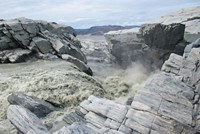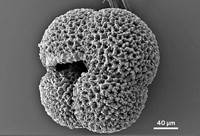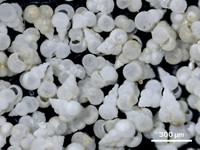Advertisement
Grab your lab coat. Let's get started
Welcome!
Welcome!
Create an account below to get 6 C&EN articles per month, receive newsletters and more - all free.
It seems this is your first time logging in online. Please enter the following information to continue.
As an ACS member you automatically get access to this site. All we need is few more details to create your reading experience.
Not you? Sign in with a different account.
Not you? Sign in with a different account.
ERROR 1
ERROR 1
ERROR 2
ERROR 2
ERROR 2
ERROR 2
ERROR 2
Password and Confirm password must match.
If you have an ACS member number, please enter it here so we can link this account to your membership. (optional)
ERROR 2
ACS values your privacy. By submitting your information, you are gaining access to C&EN and subscribing to our weekly newsletter. We use the information you provide to make your reading experience better, and we will never sell your data to third party members.
Environment
Tracking Ancient Ocean 'Burps'
Sediment study links rise in atmospheric carbon dioxide at end of last ice age to abrupt releases from ocean
by Rachel Petkewich
May 18, 2007

Oceanographers and climatologists speculate that large amounts of carbon dioxide entered the atmosphere from reservoirs in the deep ocean at the end of the last ice age, which occurred about 19,000 years ago. Long-awaited evidence that traces the redistribution of the gas comes from a new study published in Science (DOI: 10.1126/science1142326).
What scientists have been trying to explain is the rise in atmospheric CO2 from 180 to 265 ppm accompanied by a puzzling 35% drop in the gas's radiocarbon (14C) content, according to Ralph F. Keeling of Scripps Institution of Oceanography at the University of California, San Diego. In a commentary accompanying the Science paper, he writes that a simple but unproven explanation to link both changes is a well-known process called ventilation, by which the ocean's surface waters are exchanged with subsurface waters.
"A ventilation increase could increase atmospheric CO2 concentration by releasing excess CO2 that had accumulated in subsurface waters by the decomposition of detritus," Keeling writes. In addition, CO2 from subsurface waters would have lower 14C content than that of surface waters because 14C is produced naturally in the atmosphere, and the 14C in CO2 isolated from the atmosphere can only decay rather than accumulate.
Researchers hypothesize that during the last ice age, an isolated carbon reservoir existed at a depth below 2,500 meters. But obtaining good-quality sediment cores—which serve as a chronicle of the radiocarbon evidence—from such depths is difficult.
Now, paleoclimatologist Thomas M. Marchitto Jr. at the University of Colorado, Boulder, and colleagues believe they have tracked CO2 "burped" from that deep reservoir as it made its way into the atmosphere. Their findings are based on analysis of a high-quality sediment core collected just 700 meters below the ocean surface off the southern tip of Baja California. They measured the amounts of 14C in bottom-dwelling foraminifera, a ubiquitous marine microorganism, found in the different layers of the core. In combination with other previously collected data, they constructed a record of 14C concentrations in that part of the ocean. Two very low levels of 14C in the oceanic record correlated to the time periods when CO2 concentrations abruptly increased in the atmosphere.
"Marchitto and colleagues have the first ocean data to show that the carbon exhalation happened twice, after each of the most severe cold episodes of the past 20,000 years," says??Lloyd Keigwin, a marine geologist at Woods Hole Oceanographic Institution, in Massachusetts.
But Keeling wants to see more data. "The study nevertheless leaves the skeptics with arrows in their quiver," he writes in his commentary. For example, he notes that the results indicate pockets of water with so little 14C "that they start to stretch credibility." But if follow-up work supports the findings, this study could be a turning point, he writes.
Marchitto says additional 14C evidence should be available at other sites around the world. Next, he and his colleagues plan to obtain and analyze a core from a site near the southern tip of South America.





Join the conversation
Contact the reporter
Submit a Letter to the Editor for publication
Engage with us on Twitter